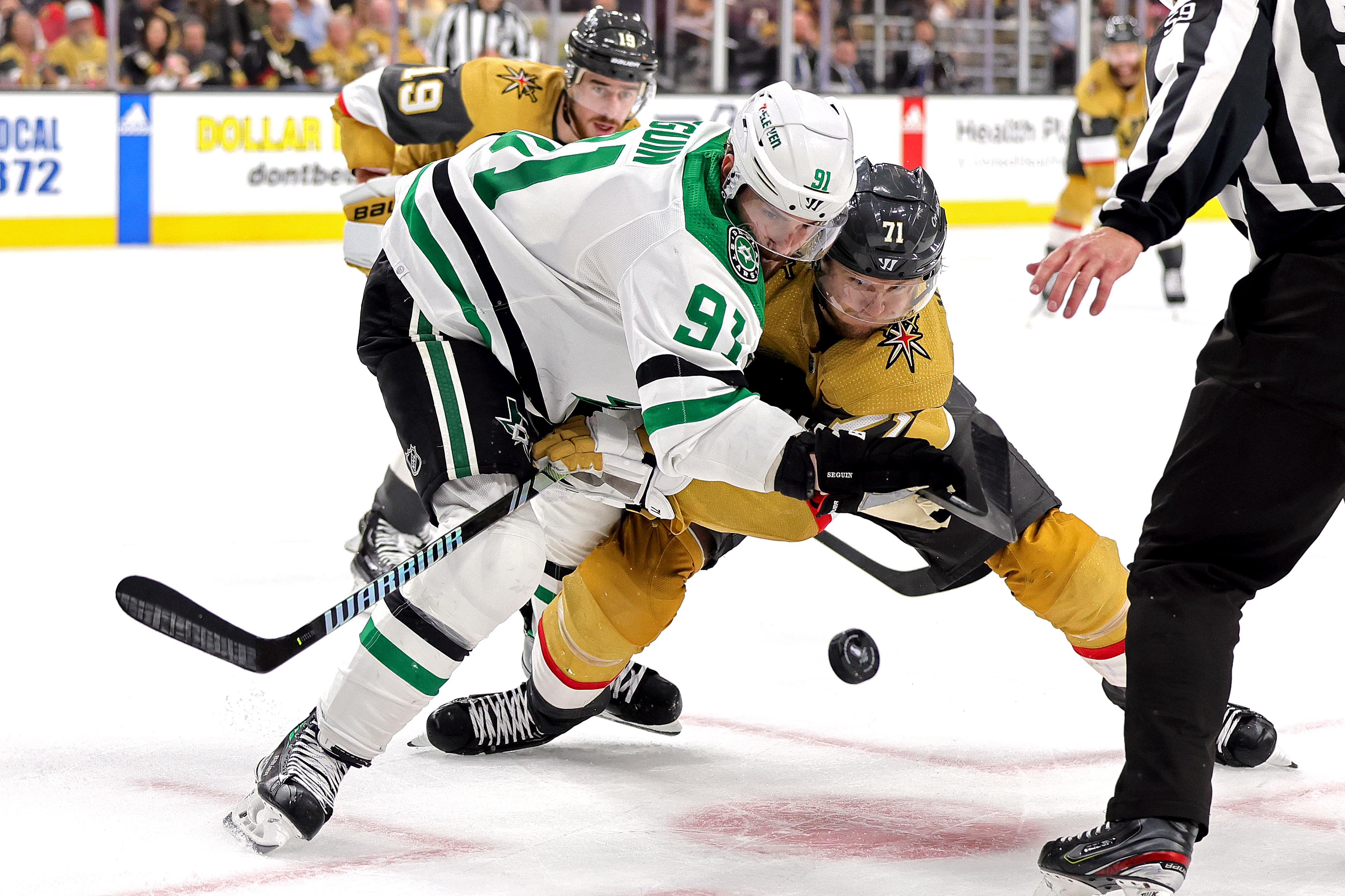
Stars, nor anyone in the NHL, suffers from the NBA’s ‘load management’ virus
Tyler Seguin could have easily asked out Game 2, but there is one “code” NHL players universally follow that the NBAers badly need to embrace.
The Dallas Stars center took a shot off his lower leg late in the Stars’ Game 1 loss in the Western Conference final in Las Vegas that left him badly hobbling.
Of course he played in Game 2.
Because the leg is still attached. Because this is the playoffs. Because this is hockey.
Because in the NHL, “load management” is a load of bull .... (fill in the blank).
If Seguin was affected by the puck to the leg, he didn’t really show it in the Stars’ 3-2 overtime loss against the Las Vegas Golden Nuggets.
The Stars blew this one; they allowed the game-tying goal with less than two minutes remaining in regulation. Vegas, for the second consecutive game, scored the game-winner less than two minutes into overtime.
Game 3 is Tuesday night at the American Airlines Center.
Seguin didn’t contribute much, but he played.
The difference between the NHL and NBA in “load management” could not be more evident, and pathetic. It’s become a major problem for the NBA in its effort to market its product.
San Antonio Spurs coach Gregg Popovich’s little creation to rest his star players, specifically Tim Duncan and Tony Parker years ago, has morphed into a widely accepted practice that is doing permanent damage to the NBA.
Why does one league that plays an 82-game regular season not have this issue whereas the other does?
This is about one league that encourages guys, who are in the best shape of their lives and make millions of dollars, to take a night off or two versus one that says, “You’re a player. It’s game time. Go play.”
The NBA player may now say, “Not tonight,” whereas the NHL player is more inclined to say, “I’m good.”
“These (fans) might have enough money to come to one game,” Minnesota Timberwolves forward Anthony Edwards during All-Star weekend. “And you’re sitting out?”
Yes. Look no further than the best players in the respective sports.
The NBA’s regular season MVP was Philadelphia 76ers center Joel Embiid. He played 66 games.
The three finalists for the NHL’s Hart Trophy as its most valuable player are Edmonton’s Connor McDavid, Boston’s David Pastrnak, and Florida’s Matthew Tkachuk. The first two played 82 games, the latter only 79.
The Dallas Mavericks featured no players this season who played all 82 games. Their leader in games played was Reggie Bullock, who appeared in 78.
Where have you gone, Cal Ripken?
The 1985-’86 Mavericks roster featured five players who played at least 79 games.
The Dallas Stars roster has 11 players this season who played in at least 79 games, including eight who appeared in all 82.
It’s not as if hockey is a safer sport than basketball. It’s not as if the travel is any less in the NHL than the NBA. With franchises all in every corner of North America, the travel is worse in the NHL.
The players have access to the best nutrition, training and medical care conceivable.
This all starts with the empowered player, and scared coach/general manager.
The NBA superstar can play more. In Dirk Nowitzki’s 21-year career, he played in at least 77 games 14 times.
Michael Jordan played 15 seasons; he played 78 games 12 times, and 82 nine times. In his final season, when he was 39 years old, Michael Jordan played 82 games.
Today’s era of superstar player will never hit those marks unless he forces the issue.
Milwaukee Bucks All-Star Giannis Antetokounmpo is in the prime of his career, and he appeared in 63 games this season. He has not played in 72 games since the 2018-19 season.
Some of this is injury. Most of it is generational thinking.
The previous generations did what they could to play all 82; Jordan was famously conscientious of fans who paid money specifically to watch him play basketball. So was the late Kobe Bryant.
Some of the NBA’s great all-time images are guys playing through hell; Willis Reed, playing on a broken leg in Game 7 of the 1970 NBA Finals. Michael Jordan in the “flu” (now food poisoning) game; Larry Bird playing through a back injury to come back and beat the Pacers in the decisive Game 5 of the 1991 playoffs.
The NBA now is loaded with a generation of stars who, once they are offered the chance not to play, grab it.
In fairness, not every star embraces the notion of load management.
“I always value the one kid that drove 1,000 miles to come see me play this random night,” L.A. Clippers guard Russell Westbrook told reporters during the regular season on this topic. “If I don’t play, I feel like I am letting the one fan down.”
That fan could spend hundreds of dollars to watch Embiid, Giannis, Luka, and the rest and there is an increasing chance they will see that player on the bench in street clothes.
NBA commissioner Adam Silver has acknowledged this is a problem, and the league is trying to find solutions that simply may not have one.
The NHL has its problems, but “load management” is not one of them.
Watching Tyler Seguin suit up and play Game 2 on what would have been a badly bruised leg was not a surprise.
It’s hockey.
